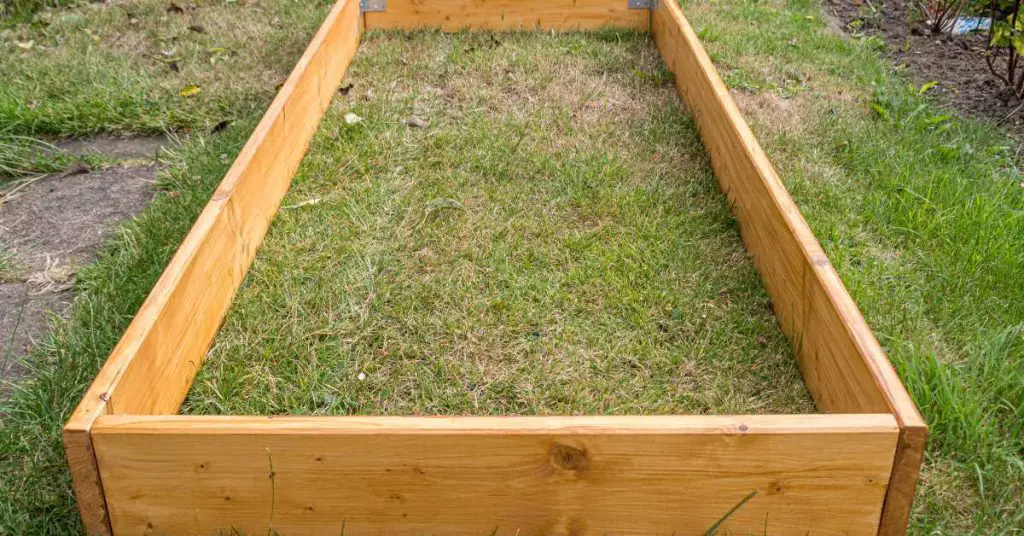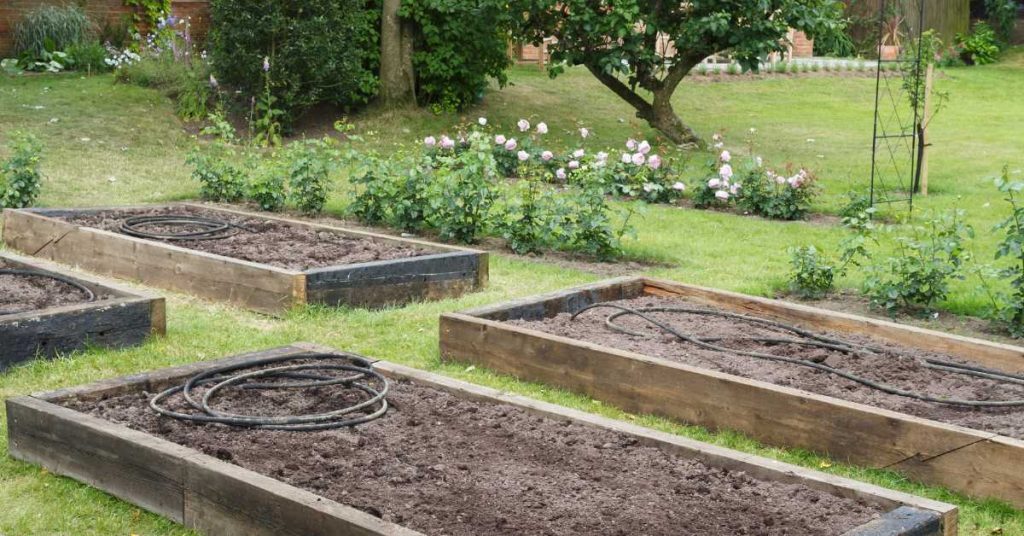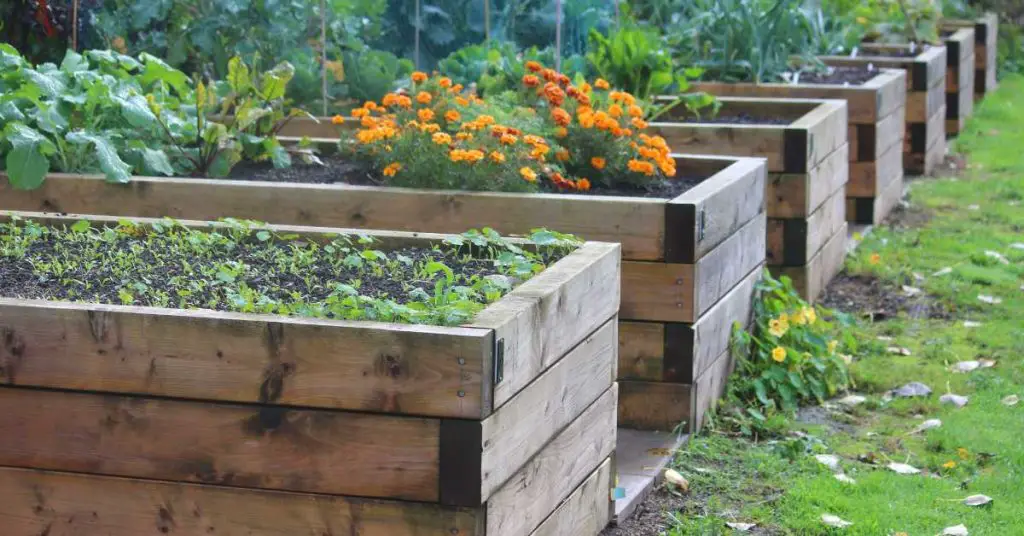Can You Put a Raised Garden Bed on Grass?
Can you put a raised garden bed on grass? Yes, you can put a new raised bed on top of the grass. You do not have to remove the grass before putting in your new raised garden bed if you don’t want to. Just build or sit your raised bed on top of the grass, line the garden bed with landscape fabric or a thick layer of cardboard and you are ready to put in the soil. The fabric or cardboard will help prevent weeds from growing into your raised bed.
There are a lot of questions that people have about gardening, and one of the most common is whether or not you can put a raised garden bed on grass. The answer to this question is: it depends. There are a few things you need to consider before deciding if this is the right option for you.
In this blog post, we will discuss the pros and cons of putting a raised garden bed on grass, so that you can make an informed decision about what is best for your garden!
Can You Put a Raised Bed on Grass?
Yes, you can put a raised bed on grass without doing anything special preparation or you can put down a layer of thick cardboard or weed fabric to prevent weeds from growing up into your raised bed.
For the first couple of seasons, it will be important to stay on top of pulling weeds if there are any that get through the cardboard or weed fabric.
If you let the weeds take hold it will be difficult to get it under control again.

Can You Leave Grass Under a Raised Garden Bed?
Yes, you can leave the grass under a raised garden bed by just laying down cardboard to cover up the grass. You do not need to kill the grass with chemicals or anything else if you do not want to. Just cover it up with cardboard or weed fabric and then put your soil or compost down on top of that.
When it is time to plant your vegetable or fruit crops into your new bed just make sure to pull any weeds that might have gotten through. Then plant your crops into the bed and cover any area of the bed that you do not plant into to prevent weed seeds from blowing onto it. Just uncover that area when you are ready to plant it.
Do You Need to Dig up Grass Under a Raised Garden Bed?
No, there is no reason or need to remove the grass from under a raised bed when you are putting a new raised bed in. The grass that you leave under will eventually die when you put the raised bed down on top of it.
Just being covered up with some cardboard and several inches of soil will help prevent the grass from getting the light that the grass needs to grow.
What Do You Put in The Bottom of A Raised Garden Bed?
Installing a raised garden bed is an excellent way to have a beautiful, bountiful garden! Before you plant anything, one of the most important steps you should take is to choose the right material for the bottom of your raised garden bed.
Most often, landscape fabric is used, as it allows water to pass through while preventing weeds from taking root and invading your vegetable plot.
Another option is plastic sheeting – it packs tightly around rocks or other shapes and prevents roots from penetrating deep layers of soil.
Finally, hardware cloth stakes will make sure rodents like moles, voles, and gophers can’t tunnel their way into your vegetable patch.
Ultimately, depending on what type of plants you plan to cultivate in your raised beds, each material provides its own advantages for creating an ideal environment for your plants!

Should You Put Cardboard Under Raised Beds?
If you’re contemplating installing a raised bed in your garden, yes, you should absolutely put cardboard down. Cardboard is an amazing option for putting underneath the bed because it acts as a great weed barrier and compost activator.
It also helps to add organic matter to the soil and will break down over time, which will add nutrition to the soil and give the earthworms food to eat.
Cardboard can be easily found at most hardware stores or big box stores, making it a budget-friendly choice no matter what size of raised bed you choose to install!
Can You Plant a Garden Over Grass?
Yes, one of the best ways to create a garden is to simply place your raised bed right on top of the grass. You can either put down sheet mulching using cardboard, newspaper, or even something like landscape fabric to create a barrier to stop weeds.
You can also just bring in bulk compost to layer on top of the grass. I had great success putting down about 8 inches of compost over an area of my lawn to create a large raised bed to plant in.
Do I Need to Line Raised Beds?
You do not need to line the raised beds, however, you will be better off if you line your raised bed with something like cardboard or landscape fabric to prevent weeds from coming through.
FAQs
Here are some common questions about putting in raised beds:
How Do You Prepare the Ground for A Raised Garden Bed?
Preparing the ground for your raised garden bed is an important step before planting. First, choose a spot that is easily accessible and gets plenty of sun – if possible, at least 6 hours of sunlight each day.
Remove any weeds or grass from the area then loosen the soil with a shovel or tiller. Spread 2 to 3 inches of compost across the area and use a rake to spread it out evenly. For an extra nutrient bonus, mix in some fertilizer.
Make sure any surface rocks are removed before adding soil and make sure your bed is slightly sloping away from buildings to allow water runoff. After all this preparation you can finally start planting in your new raised garden bed!

How Deep Should a Raised Garden Bed Be?
While raised garden beds provide a variety of benefits to your garden’s health, they need to be constructed with careful attention to their depth.
12 inches is considered the optimal height for most kinds of plants, as it allows enough soil to retain moisture and nutrients while also giving long roots enough space to dig down deep even below into the native soil.
But don’t fret if this isn’t an option for you–as long as there is enough soil for plant roots and drainage, even beds with just 4 inches of depth can still grow flowers, vegetables, and herbs with great success.
Just keep in mind that the types of plants you are growing will inform how deep your raised bed needs to be.
Related: How Tall Do Raised Beds Need To Be To Keep Rabbits Out
Should I Put Gravel in The Bottom of My Raised Garden Bed?
Many home gardeners believe there is a need to line the bottom of their raised bed with gravel or rocks, thinking it will increase drainage and help the soil absorb water better.
While there is no harm in doing so, there is really no need to add any material when building your raised garden bed. Depending on the type of materials you choose for your raised bed, like brick or cement blocks, the soil may not absorb water as well as if there was gravel below it.
But there are many ways to improve soil management without adding a layer of gravel, from altering different types of soils to understanding each plant’s specific needs.
Gravel may also introduce additional weeds into your growing space and make it difficult to remove them when there is already so little soil in the bed.
So while there’s no harm in adding gravel at the bottom of your raised garden bed, there’s certainly not much benefit either.
Can You Fill a Raised Bed with Just Compost?
Raised beds are a great way to grow your plants – but can you fill them with just compost? Typically, soil mix for raised beds should contain about 50% finished compost.
This allows the soil to retain water, and provide necessary nutrients and drainage for plant roots. If you use too much compost, however, it can lead to drainage problems and inhibit root growth.
Typically, other types of soil amendment such as sand, peat moss or vermiculite should make up the remaining 50%. Finding the right balance will ensure you get optimal growth and development from whatever is growing in your raised bed!
What Kind of Soil Do You Put in A Raised Garden Bed?
Raised garden beds are the perfect way to cultivate your own fresh fruits and veggies right at your fingertips. When setting up your raised bed, it’s important to ensure your soil mix is just right!
Your soil should be a combination of compost, topsoil, and either peat moss or vermiculite.
Compost brings essential nutrients directly to your plants roots, topsoil supplies your plants with extra minerals and healthier soil structure, and finally the added benefit of either peat moss or vermiculite will help your soil retain moisture and provide aeration.
With your expertly blended raised bed soil mix, you can look forward to a vibrant vegetable harvest in no time!
Final Thoughts
If you’re looking for an easy way to add a garden bed to your yard, the answer is yes – you can put a raised garden bed on grass. But there are a few things to keep in mind when making the switch.
Follow our tips, and you’ll be able to enjoy fresh produce from your very own backyard garden in no time!





